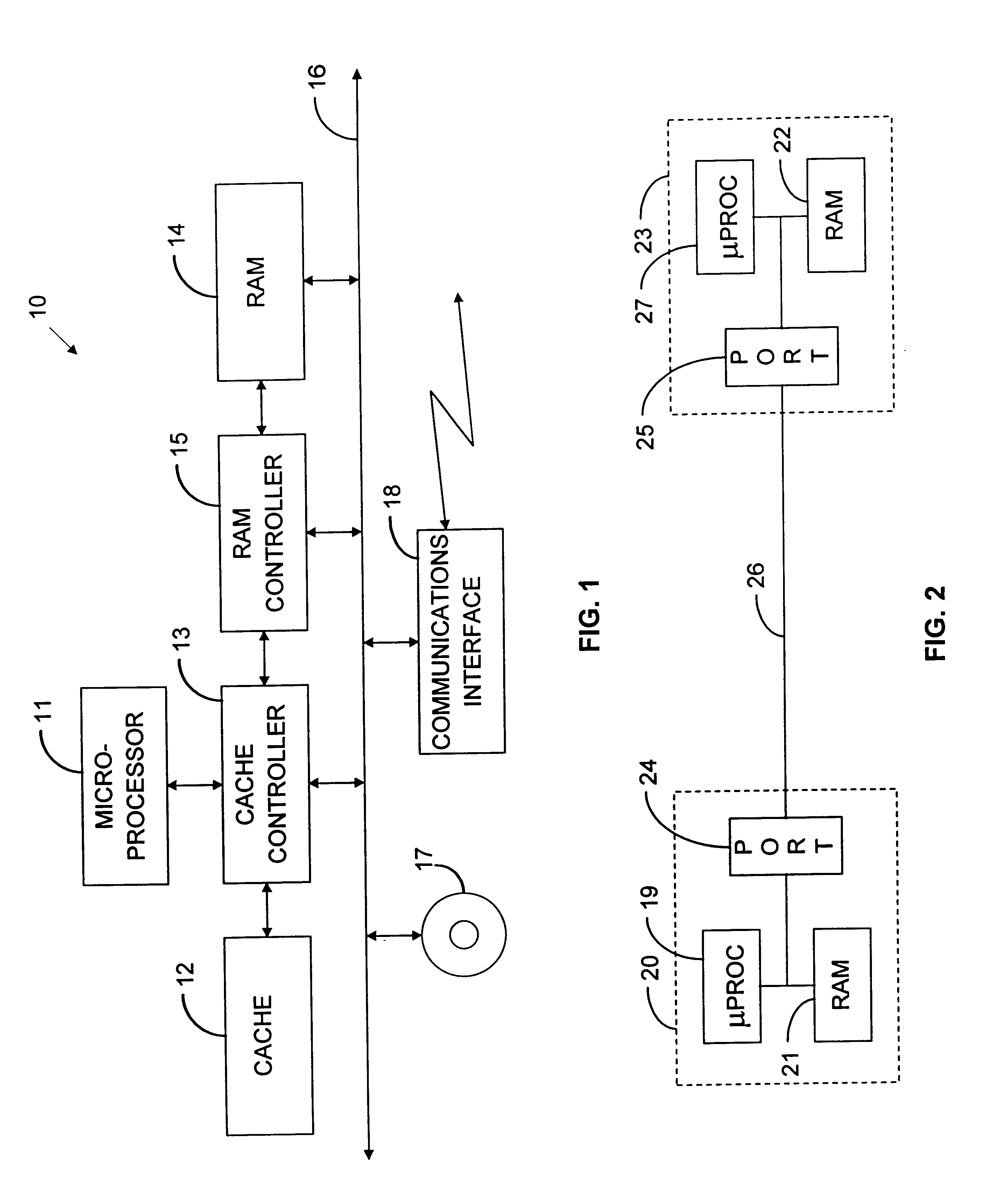Memory-block coalescing based on run-time demand monitoring
a technology of run-time demand and memory block, applied in the field of computer memory allocators, can solve the problems of large quantity of intermediates, large number of smaller blocks, and insufficient number of smaller blocks later
- Summary
- Abstract
- Description
- Claims
- Application Information
AI Technical Summary
Benefits of technology
Problems solved by technology
Method used
Image
Examples
Embodiment Construction
The demand-based coalescing to which the present invention is directed can be implemented in essentially all types of computer systems, but FIG. 1 depicts one type of computer system for the sake of concreteness. It is a uniprocessor system 10 that employs a single microprocessor 11. In FIG. 1's exemplary system, microprocessor 11 receives data and instructions for operating on them from on-board cache memory or further cache memory 12, possibly through the mediation of a cache controller 13. The cache controller 13 can in turn receive such data from system read / write memory (“RAM”) 14 through a RAM controller 15 or from various peripheral devices through a system bus 16.
The RAM 14's data and instruction contents, which can configure the system to implement the teachings to be described below, will ordinarily have been loaded from peripheral devices such as a system disk 17. Other sources include communications interface 18, which can receive instructions and data from other compute...
PUM
 Login to View More
Login to View More Abstract
Description
Claims
Application Information
 Login to View More
Login to View More - R&D
- Intellectual Property
- Life Sciences
- Materials
- Tech Scout
- Unparalleled Data Quality
- Higher Quality Content
- 60% Fewer Hallucinations
Browse by: Latest US Patents, China's latest patents, Technical Efficacy Thesaurus, Application Domain, Technology Topic, Popular Technical Reports.
© 2025 PatSnap. All rights reserved.Legal|Privacy policy|Modern Slavery Act Transparency Statement|Sitemap|About US| Contact US: help@patsnap.com



